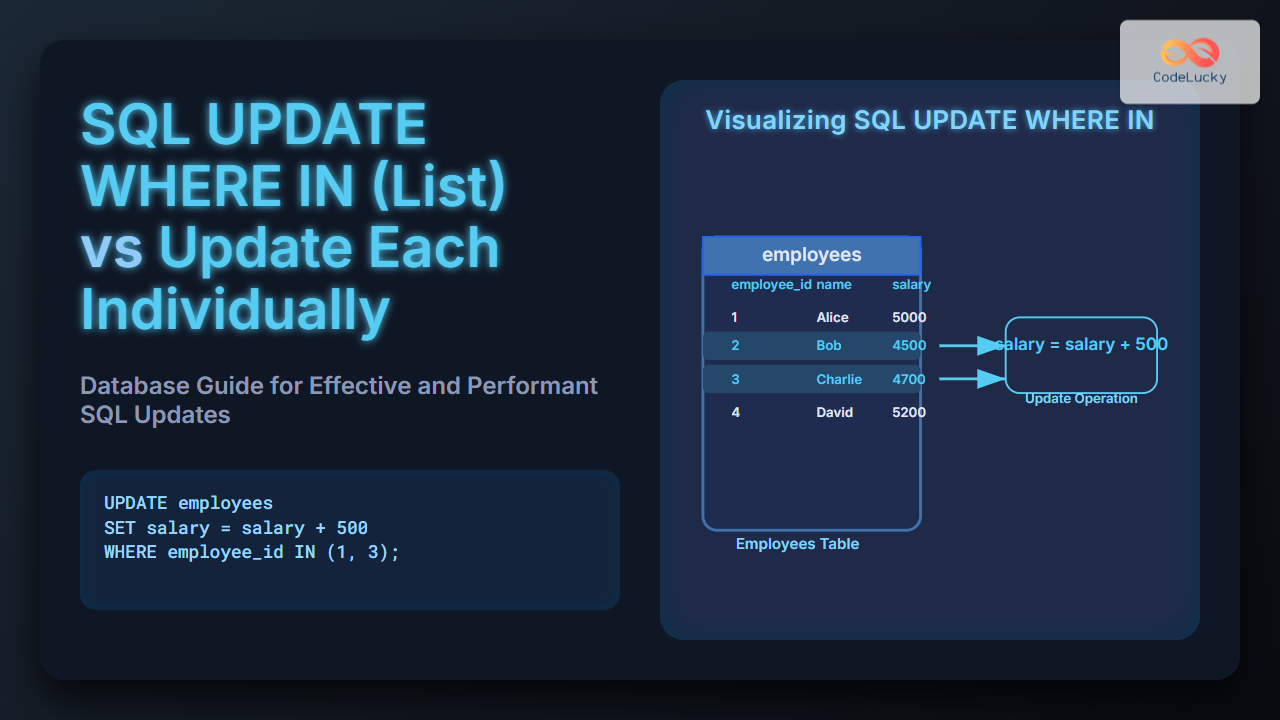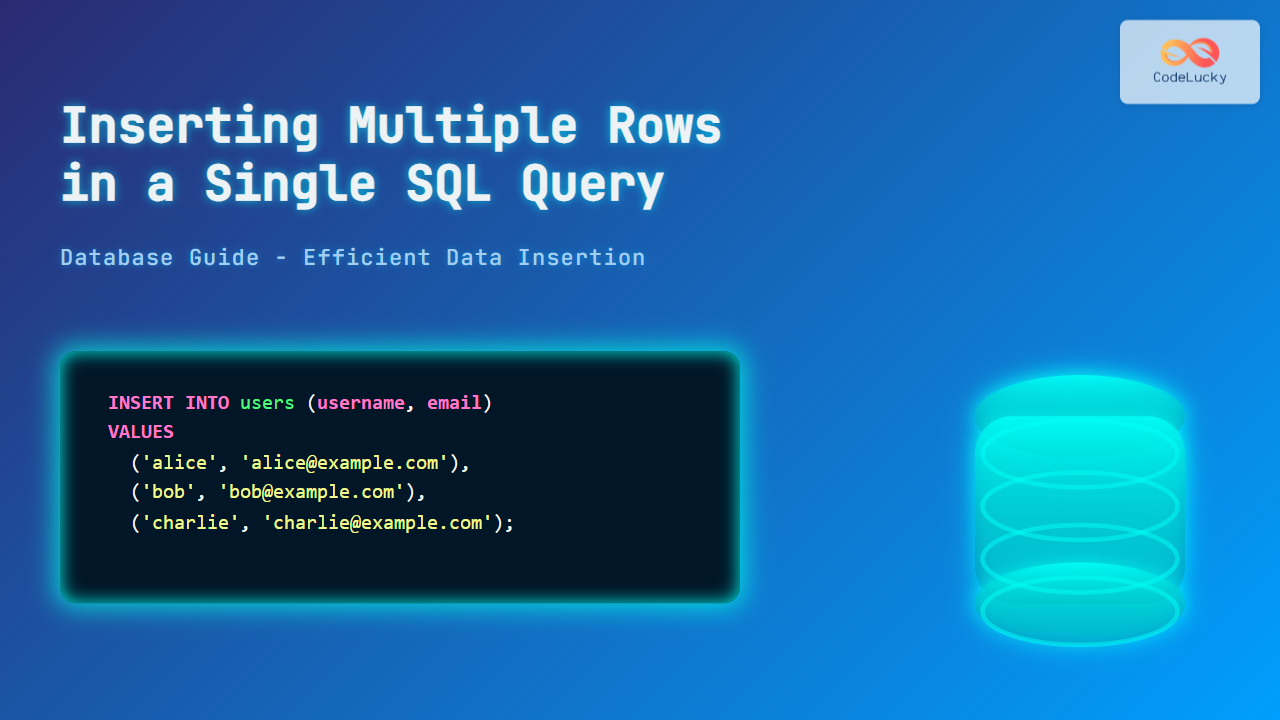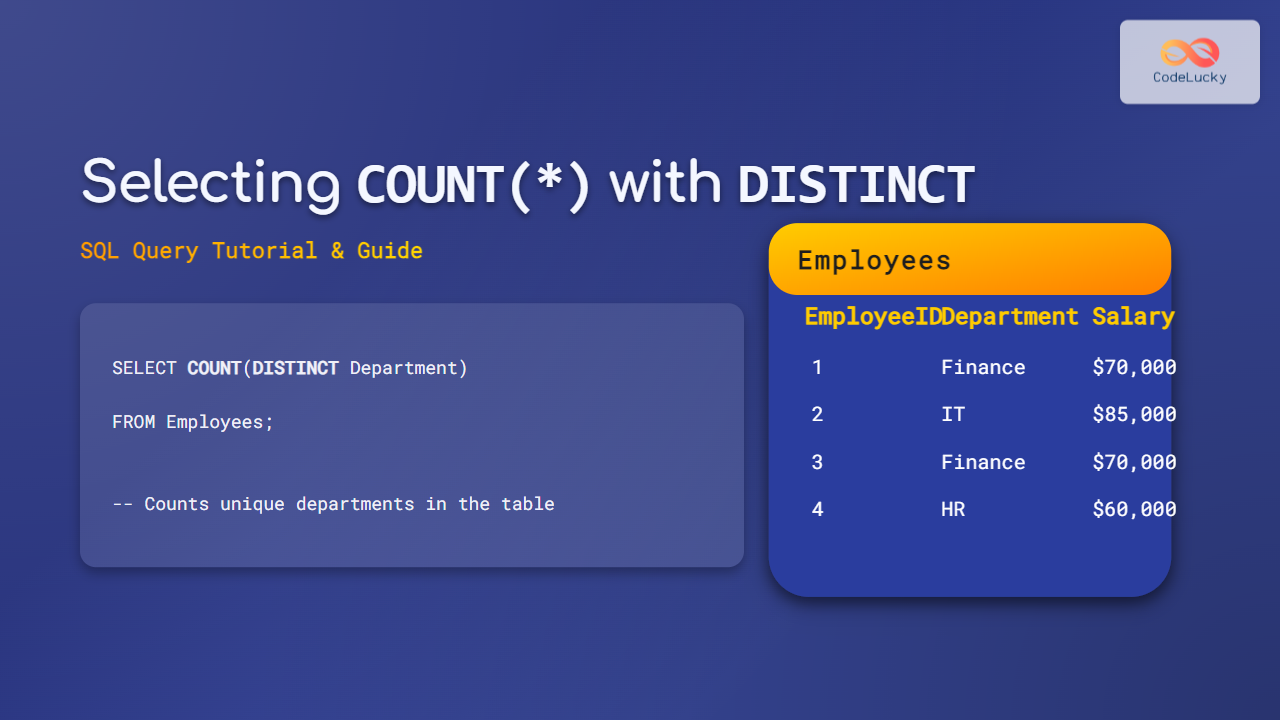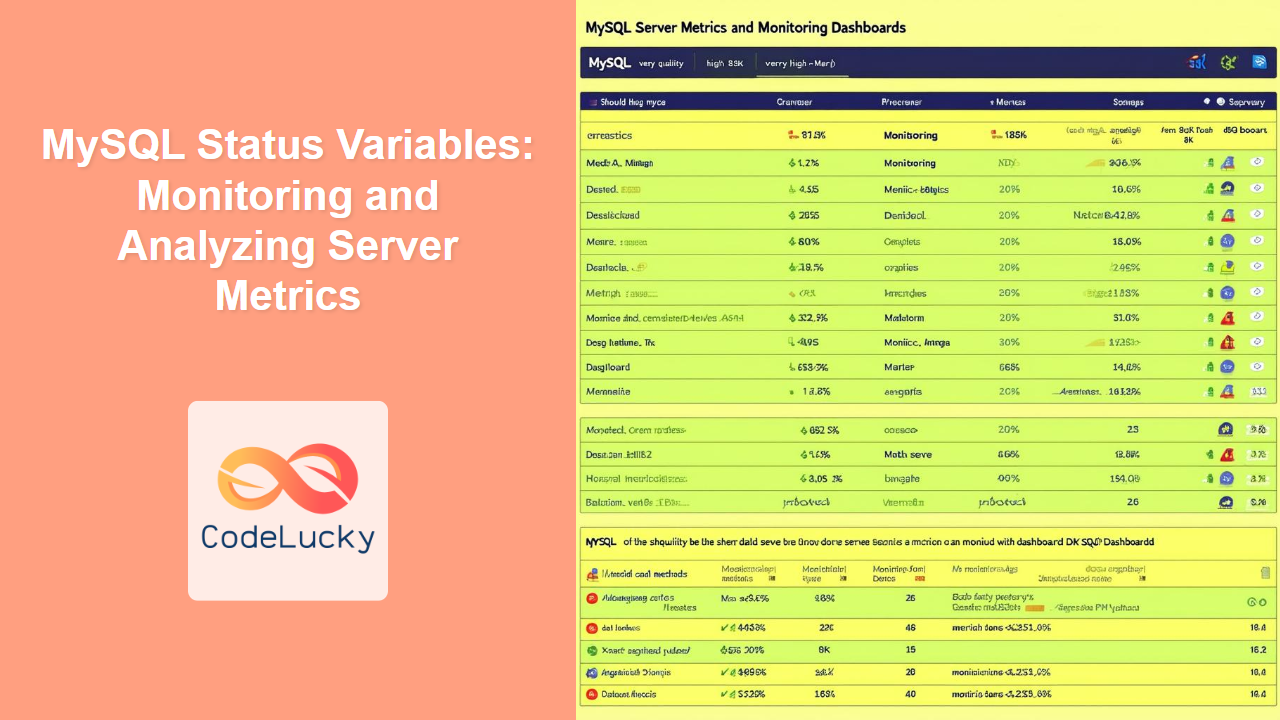SQL is a powerful language for managing and manipulating relational databases, and one of its most useful features is the ability to copy data from one table to another. The INSERT INTO SELECT statement is a versatile tool that allows you to do just that, combining the functionality of INSERT INTO and SELECT statements. In this comprehensive guide, we'll explore the ins and outs of this statement, providing you with practical examples and real-world scenarios to enhance your SQL skills.
Understanding the INSERT INTO SELECT Statement
The INSERT INTO SELECT statement copies data from one table and inserts it into another table. This operation is particularly useful when you need to:
- Create backups of your data
- Populate a new table with existing data
- Transfer data between different databases
- Aggregate data from multiple tables into a single table
The basic syntax of the INSERT INTO SELECT statement is as follows:
INSERT INTO target_table (column1, column2, column3, ...)
SELECT column1, column2, column3, ...
FROM source_table
WHERE condition;
Let's break down this syntax:
target_table: The table where you want to insert the datacolumn1, column2, column3, ...: The columns in the target table where the data will be insertedSELECT: The SELECT statement that retrieves the data from the source tablesource_table: The table from which you're copying the dataWHERE condition: An optional clause to filter the data being copied
Now, let's dive into some practical examples to see how this statement works in action.
Example 1: Copying All Data from One Table to Another
Let's start with a simple scenario. Imagine you have a table called employees and you want to create a backup of this table called employees_backup.
First, let's create our employees table and insert some sample data:
CREATE TABLE employees (
employee_id INT PRIMARY KEY,
first_name VARCHAR(50),
last_name VARCHAR(50),
email VARCHAR(100),
hire_date DATE
);
INSERT INTO employees (employee_id, first_name, last_name, email, hire_date)
VALUES
(1, 'John', 'Doe', '[email protected]', '2020-01-15'),
(2, 'Jane', 'Smith', '[email protected]', '2019-03-20'),
(3, 'Mike', 'Johnson', '[email protected]', '2021-05-10');
Now, let's create the employees_backup table and copy all the data from employees:
CREATE TABLE employees_backup (
employee_id INT PRIMARY KEY,
first_name VARCHAR(50),
last_name VARCHAR(50),
email VARCHAR(100),
hire_date DATE
);
INSERT INTO employees_backup
SELECT * FROM employees;
After executing these statements, the employees_backup table will contain an exact copy of the data from the employees table. Let's verify this:
SELECT * FROM employees_backup;
Result:
| employee_id | first_name | last_name | hire_date | |
|---|---|---|---|---|
| 1 | John | Doe | [email protected] | 2020-01-15 |
| 2 | Jane | Smith | [email protected] | 2019-03-20 |
| 3 | Mike | Johnson | [email protected] | 2021-05-10 |
As you can see, all the data has been successfully copied to the new table. 🎉
Example 2: Copying Specific Columns
Sometimes, you might want to copy only specific columns from one table to another. Let's say we want to create a table with just the names and email addresses of our employees.
First, let's create the new table:
CREATE TABLE employee_contacts (
id INT PRIMARY KEY AUTO_INCREMENT,
full_name VARCHAR(100),
email VARCHAR(100)
);
Now, let's use INSERT INTO SELECT to populate this table with data from the employees table:
INSERT INTO employee_contacts (full_name, email)
SELECT CONCAT(first_name, ' ', last_name), email
FROM employees;
In this example, we're using the CONCAT function to combine the first_name and last_name into a single full_name column. Let's check the results:
SELECT * FROM employee_contacts;
Result:
| id | full_name | |
|---|---|---|
| 1 | John Doe | [email protected] |
| 2 | Jane Smith | [email protected] |
| 3 | Mike Johnson | [email protected] |
As you can see, we've successfully created a new table with only the information we needed. 📊
Example 3: Copying Data with a WHERE Clause
The INSERT INTO SELECT statement becomes even more powerful when combined with a WHERE clause. This allows you to selectively copy data based on certain conditions.
Let's say we want to create a table of employees hired in 2020 or later. First, we'll create the new table:
CREATE TABLE recent_hires (
employee_id INT PRIMARY KEY,
first_name VARCHAR(50),
last_name VARCHAR(50),
hire_date DATE
);
Now, let's use INSERT INTO SELECT with a WHERE clause to populate this table:
INSERT INTO recent_hires
SELECT employee_id, first_name, last_name, hire_date
FROM employees
WHERE hire_date >= '2020-01-01';
Let's check the results:
SELECT * FROM recent_hires;
Result:
| employee_id | first_name | last_name | hire_date |
|---|---|---|---|
| 1 | John | Doe | 2020-01-15 |
| 3 | Mike | Johnson | 2021-05-10 |
As you can see, only employees hired in 2020 or later were copied to the new table. 📅
Example 4: Copying Data from Multiple Tables
The INSERT INTO SELECT statement can also be used to combine data from multiple tables. This is particularly useful when you need to aggregate data from different sources.
Let's create a new table called departments and add some sample data:
CREATE TABLE departments (
department_id INT PRIMARY KEY,
department_name VARCHAR(50)
);
INSERT INTO departments (department_id, department_name)
VALUES
(1, 'HR'),
(2, 'IT'),
(3, 'Sales');
-- Let's also add a department_id to our employees table
ALTER TABLE employees ADD COLUMN department_id INT;
UPDATE employees SET department_id = 1 WHERE employee_id = 1;
UPDATE employees SET department_id = 2 WHERE employee_id = 2;
UPDATE employees SET department_id = 3 WHERE employee_id = 3;
Now, let's create a new table that combines employee information with their department names:
CREATE TABLE employee_details (
employee_id INT PRIMARY KEY,
full_name VARCHAR(100),
department_name VARCHAR(50),
hire_date DATE
);
INSERT INTO employee_details (employee_id, full_name, department_name, hire_date)
SELECT e.employee_id, CONCAT(e.first_name, ' ', e.last_name), d.department_name, e.hire_date
FROM employees e
JOIN departments d ON e.department_id = d.department_id;
Let's check the results:
SELECT * FROM employee_details;
Result:
| employee_id | full_name | department_name | hire_date |
|---|---|---|---|
| 1 | John Doe | HR | 2020-01-15 |
| 2 | Jane Smith | IT | 2019-03-20 |
| 3 | Mike Johnson | Sales | 2021-05-10 |
As you can see, we've successfully combined data from two tables into a new, more detailed table. 🔗
Example 5: Using INSERT INTO SELECT with Aggregate Functions
The INSERT INTO SELECT statement can be particularly powerful when combined with aggregate functions. This allows you to summarize data as you copy it.
Let's create a table to store the number of employees in each department:
CREATE TABLE department_employee_count (
department_id INT PRIMARY KEY,
department_name VARCHAR(50),
employee_count INT
);
INSERT INTO department_employee_count (department_id, department_name, employee_count)
SELECT d.department_id, d.department_name, COUNT(e.employee_id)
FROM departments d
LEFT JOIN employees e ON d.department_id = e.department_id
GROUP BY d.department_id, d.department_name;
Let's check the results:
SELECT * FROM department_employee_count;
Result:
| department_id | department_name | employee_count |
|---|---|---|
| 1 | HR | 1 |
| 2 | IT | 1 |
| 3 | Sales | 1 |
This example demonstrates how you can use INSERT INTO SELECT with aggregate functions to create summary tables. 📊
Best Practices and Considerations
When using the INSERT INTO SELECT statement, keep these best practices in mind:
-
Data Types: Ensure that the data types of the source and target columns are compatible. Mismatched data types can lead to errors or data truncation.
-
Column Order: The order of columns in the
SELECTstatement should match the order of columns specified in theINSERT INTOclause. -
Performance: For large datasets,
INSERT INTO SELECTcan be resource-intensive. Consider using batch inserts or running the operation during off-peak hours if necessary. -
Constraints: Be aware of any constraints (like primary keys or unique constraints) on the target table that might prevent certain rows from being inserted.
-
Transactions: For data integrity, consider wrapping your
INSERT INTO SELECTstatement in a transaction, especially when dealing with multiple tables or complex operations.
Conclusion
The INSERT INTO SELECT statement is a powerful tool in SQL that allows you to efficiently copy data between tables. Whether you're creating backups, populating new tables, or aggregating data from multiple sources, this statement offers the flexibility and functionality you need.
By mastering the INSERT INTO SELECT statement, you'll be able to manipulate and manage your database data more effectively, saving time and reducing the potential for errors that can occur with manual data entry.
Remember, the key to becoming proficient with SQL is practice. Try out these examples in your own database environment, experiment with different scenarios, and you'll soon find yourself using INSERT INTO SELECT with confidence in your day-to-day database operations. Happy coding! 💻🚀
- Understanding the INSERT INTO SELECT Statement
- Example 1: Copying All Data from One Table to Another
- Example 2: Copying Specific Columns
- Example 3: Copying Data with a WHERE Clause
- Example 4: Copying Data from Multiple Tables
- Example 5: Using INSERT INTO SELECT with Aggregate Functions
- Best Practices and Considerations
- Conclusion



















